As the electric vehicle (EV) market continues to expand, two Chinese automotive players, BYD and XPeng, are making significant strides in innovation and technology. Both companies are making waves with their latest offerings, the BYD Seal and the XPeng P7i, in the sedan category. This article will dive into a comprehensive comparison of these two electric sedans, highlighting their technical specifications and the innovations that set them apart.
BYD Seal vs XPeng P7 – Performance, range & efficiency compared
Both models have their strengths – but which one suits you more?
Compare performance, efficiency, price and space directly: BYD Seal or XPeng P7?
Overview of Models
The BYD Seal, a 2023 model, offers a sleek design complemented by impressive technical prowess. With a choice between rear-wheel drive (RWD) and all-wheel drive (AWD) configurations, it promises a mix of efficiency and performance. On the other hand, the XPeng P7i, the 2024 iteration of XPeng's flagship sedan, boasts a more refined design with competitive specifications aimed at the tech-savvy driver.
Power and Performance
When it comes to horsepower, the BYD Seal offers a robust performance with its two power options: 313 HP for its base variant and a thrilling 530 HP for the performance version. In contrast, the XPeng P7i offers a more modest 276 HP in its entry-level model, while the high-performance variant peaks at 473 HP. Both cars offer compelling acceleration figures, with the Seal achieving 0-100 km/h in just 5.9 seconds for the AWD version, while the XPeng P7i excels with a remarkable 4.1 seconds in its high-performance variant.
Battery and Range
Range anxiety is a common concern among EV buyers, and both BYD and XPeng address this issue effectively. The BYD Seal provides an electric range of 570 km with a consumption rate of 16.6 kWh/100 km, while the XPeng P7i offers slightly more range at 576 km, albeit with a slightly higher consumption of 16.8 kWh/100 km. Both vehicles are designed to ensure that drivers can enjoy lengthy trips without frequent charging stops.
Torque and Top Speed
Torque is a critical specification for electric vehicles as it affects acceleration and driving dynamics. The BYD Seal offers a respectable torque of 360 Nm, while its performance variant pushes this figure to 670 Nm. Meanwhile, the XPeng P7i takes it a notch higher with an entry-level 440 Nm and an impressive 757 Nm in its high-performance model. In terms of top speed, the BYD Seal caps out at 180 km/h, while the XPeng P7i offers a more exciting maximum speed of 200 km/h.
Interior and Space
Inside, both vehicles are equipped with premium materials and modern technology. The BYD Seal features a trunk capacity of 400 liters, making it quite practical for everyday use. The XPeng P7i has a slightly more generous trunk space at 440 liters, providing that extra touch of convenience for the driver. Ultimately, both cars seat five, a common feature for sedans in this category.
Weight and Efficiency
The BYD Seal has a curb weight ranging from 2055 kg for the base variant to 2185 kg for the performance version. The XPeng P7i is just a tad lighter, with its weight ranging from 2020 kg to 2180 kg across its variants. Both vehicles fall under the CO2 efficiency class A, indicating their commitment to sustainability with zero g/km emissions.
Technological Innovations
In terms of technology, XPeng stands out with its advanced driver assistance systems (ADAS) and innovative in-car connectivity features. The XPeng P7i is equipped with a host of driver-assist features that enhance safety and convenience. Meanwhile, BYD is focusing on a balance between utility and performance, integrating technologically advanced infotainment systems that appeal to traditional drivers and tech enthusiasts alike.
Conclusion
In the battle of BYD vs. XPeng, both manufacturers bring unique strengths to the table. The BYD Seal offers impressive power, efficiency, and practicality, making it a strong contender in the electric sedan market. On the other hand, the XPeng P7i provides exceptional performance, advanced technology, and an innovative approach that resonates with consumers seeking a tech-driven vehicle. Ultimately, prospective buyers must weigh their priorities—whether they prioritize raw power, innovative technology, or a balanced blend of both—before making a decision.
Here’s where it gets real: The technical differences in detail
Costs and Efficiency:
Price and efficiency are often the first things buyers look at. Here it becomes clear which model has the long-term edge – whether at the pump, the plug, or in purchase price.
BYD Seal has a slight advantage in terms of price – it starts at 40300 £, while the XPeng P7 costs 42500 £. That’s a price difference of around 2237 £.
In terms of energy consumption, the advantage goes to the BYD Seal: with 15.40 kWh per 100 km, it’s slight more efficient than the XPeng P7 with 16.80 kWh. That’s a difference of about 1.40 kWh.
As for range, the XPeng P7 performs barely noticeable better – achieving up to 576 km, about 6 km more than the BYD Seal.
Engine and Performance:
Power, torque and acceleration are the classic benchmarks for car enthusiasts – and here, some clear differences start to show.
When it comes to engine power, the BYD Seal has a a bit edge – offering 530 HP compared to 473 HP. That’s roughly 57 HP more horsepower.
In acceleration from 0 to 100 km/h, the BYD Seal is minimal quicker – completing the sprint in 3.80 s, while the XPeng P7 takes 4.10 s. That’s about 0.30 s faster.
In terms of top speed, the BYD Seal performs hardly perceptible better – reaching 220 km/h, while the XPeng P7 tops out at 200 km/h. The difference is around 20 km/h.
There’s also a difference in torque: XPeng P7 pulls somewhat stronger with 757 Nm compared to 670 Nm. That’s about 87 Nm difference.
Space and Everyday Use:
Whether family car or daily driver – which one offers more room, flexibility and comfort?
Both vehicles offer seating for 5 people.
In curb weight, BYD Seal is minimal lighter – 1907 kg compared to 2020 kg. The difference is around 113 kg.
In terms of boot space, the XPeng P7 offers barely noticeable more room – 440 L compared to 400 L. That’s a difference of about 40 L.
When it comes to payload, BYD Seal slight takes the win – 473 kg compared to 430 kg. That’s a difference of about 43 kg.
Who wins the race?
The BYD Seal proves to be wins solidly and therefore becomes our DriveDuel Champion!
BYD Seal is the better all-rounder in this comparison.
 @ BYD Auto / BYD Global Media
@ BYD Auto / BYD Global Media
BYD Seal
BYD Seal
The BYD Seal is a sleek electric fastback that punches above its class with sporty looks and a surprisingly premium cabin, offering a very modern alternative for buyers who want style and substance without the badge snobbery. On the road it feels composed and eager, packed with tech and everyday practicality—ideal for shoppers after eco-friendly performance with a cheeky wink.
details @ BYD Auto / BYD Global Media
@ BYD Auto / BYD Global Media
 @ BYD Auto / BYD Global Media
@ BYD Auto / BYD Global Media
 @ BYD Auto / BYD Global Media
@ BYD Auto / BYD Global Media
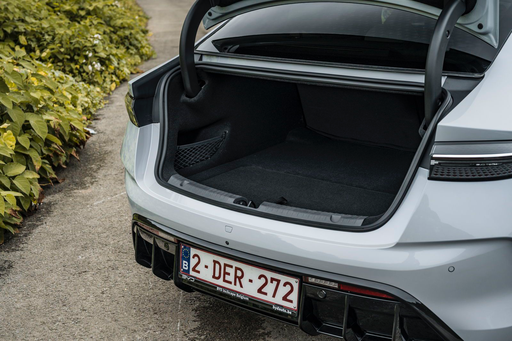 @ BYD Auto / BYD Global Media
@ BYD Auto / BYD Global Media
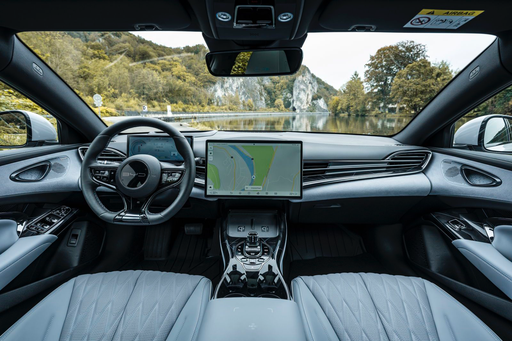 @ BYD Auto / BYD Global Media
@ BYD Auto / BYD Global Media
XPeng P7
The XPeng P7 is a sleek and stylish electric saloon that embodies the future of automotive innovation. With its modern design and advanced technology, it offers an impressive driving experience, combining luxury with sustainability. The interior is thoughtfully designed to provide comfort and convenience, making it a strong contender in the competitive market of electric vehicles.
details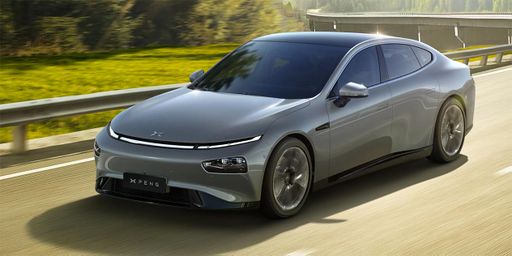 @ XPeng Motors
@ XPeng Motors
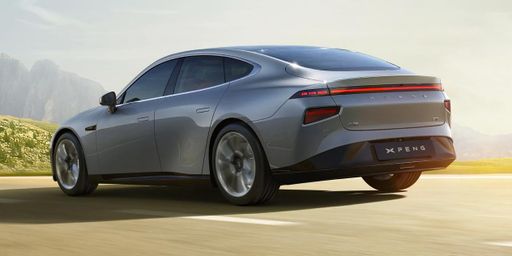 @ XPeng Motors
@ XPeng Motors
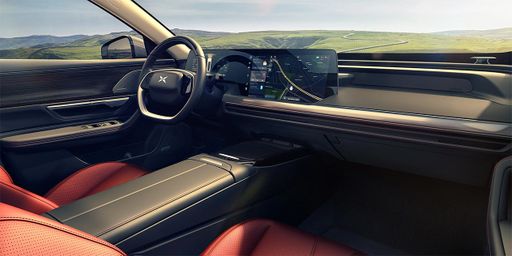 @ XPeng Motors
@ XPeng Motors
 @ BYD Auto / BYD Global Media
@ BYD Auto / BYD Global Media
|
 @ XPeng Motors
@ XPeng Motors
|
|
|
|
Costs and Consumption |
|
|---|---|
|
Price
40300 - 45400 £
|
Price
42500 - 50200 £
|
|
Consumption L/100km
-
|
Consumption L/100km
-
|
|
Consumption kWh/100km
15.4 - 18.2 kWh
|
Consumption kWh/100km
16.8 - 19.2 kWh
|
|
Electric Range
460 - 570 km
|
Electric Range
505 - 576 km
|
|
Battery Capacity
-
|
Battery Capacity
82.70 kWh
|
|
co2
0 g/km
|
co2
0 g/km
|
|
Fuel tank capacity
-
|
Fuel tank capacity
-
|
Dimensions and Body |
|
|---|---|
|
Body Type
Sedan
|
Body Type
Sedan
|
|
Seats
5
|
Seats
5
|
|
Doors
4
|
Doors
5
|
|
Curb weight
1907 - 2185 kg
|
Curb weight
2020 - 2140 kg
|
|
Trunk capacity
400 L
|
Trunk capacity
440 L
|
|
Length
4800 mm
|
Length
4888 mm
|
|
Width
1875 mm
|
Width
1896 mm
|
|
Height
1460 mm
|
Height
1450 mm
|
|
Max trunk capacity
-
|
Max trunk capacity
-
|
|
Payload
446 - 473 kg
|
Payload
430 kg
|
Engine and Performance |
|
|---|---|
|
Engine Type
Electric
|
Engine Type
Electric
|
|
Transmission
Automatic
|
Transmission
Automatic
|
|
Transmission Detail
Reduction Gearbox
|
Transmission Detail
Reduction Gearbox
|
|
Drive Type
Rear-Wheel Drive, All-Wheel Drive
|
Drive Type
Rear-Wheel Drive, All-Wheel Drive
|
|
Power HP
231 - 530 HP
|
Power HP
276 - 473 HP
|
|
Acceleration 0-100km/h
3.8 - 7.5 s
|
Acceleration 0-100km/h
4.1 - 6.7 s
|
|
Max Speed
180 - 220 km/h
|
Max Speed
200 km/h
|
|
Torque
360 - 670 Nm
|
Torque
440 - 757 Nm
|
|
Number of Cylinders
-
|
Number of Cylinders
-
|
|
Power kW
170 - 390 kW
|
Power kW
203 - 348 kW
|
|
Engine capacity
-
|
Engine capacity
-
|
General |
|
|---|---|
|
Model Year
2023 - 2025
|
Model Year
2024
|
|
CO2 Efficiency Class
A
|
CO2 Efficiency Class
A
|
|
Brand
BYD
|
Brand
XPeng
|
What drive types are available for the BYD Seal?
The BYD Seal is available as Rear-Wheel Drive or All-Wheel Drive.
The prices and data displayed are estimates based on German list prices and may vary by country. This information is not legally binding.
